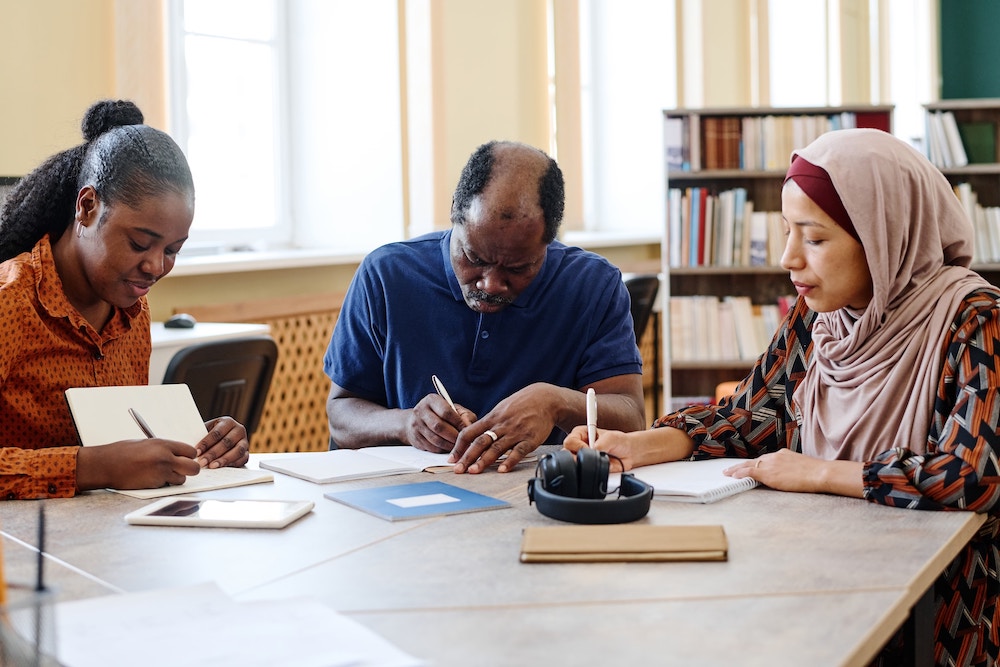In 2024, All Immigrants in California May Qualify for Medicaid

Photo via Unsplash+ in collaboration with Getty Images
Milagro, a Peruvian immigrant in Riverside County, California, has had spotty access to health care in the two decades she’s been in this country.
The 48-year-old, who works as the office manager at a nonprofit, can get emergency care through a narrow set of benefits the state makes available to immigrants without legal residency. And she has been able to get mammograms, X-rays, and blood tests at clinics that charge according to income. But it can take a long time to get such appointments, and they are often far from home.
“It’s very frustrating, because you have to have the time to go, and you can’t just lose a day of work,” says Milagro, who asked that her last name be withheld due to fear of immigration authorities.
Milagro and her husband are among the more than 700,000 immigrants ages 26-49 expected to newly qualify for full health insurance come Jan. 1. That’s when California takes the final step in opening up Medi-Cal, the state’s health care program for low-income residents, to everyone who meets eligibility requirements, regardless of their immigration status.
As I have frequently reported, getting quality care through Medi-Cal can be a challenge. But this population — often household breadwinners who can’t afford to get sick — stand to gain far better access to services such as primary and specialty care, routine dental checkups, prescription medications, inpatient hospital care, lab tests, scans, and mental health services.
New enrollees will join more than 655,000 children, young adults through age 25, and adults 50 or over who have already signed up for Medi-Cal through previous expansions to residents lacking legal authorization, according to the most recent data from the state Department of Health Care Services.
Advocates for immigrants note that people without health insurance are generally sicker and die younger. “This is life-changing for people to now be able to go get regular checkups, get labs drawn, see if they might be diabetic or have high blood pressure,” says Sarah Dar, policy director in the Los Angeles office of the California Immigrant Policy Center.
Local Journalism for Working stiffs
We write for the poets, busboys, and bartenders. We cover workers, not ‘tech’, not the shiny ‘forbes 100 bullshit’. We write about the business on your corner and the beer in your hand. Join the Bay's best newsletter.
Milagro says she is excited about what is coming. “I never had regular checkups when I was younger,” she says. “Now, I am more conscious of the fact that I need to take care of my health.”
Extending full Medi-Cal coverage to eligible individuals in the 26-49 age range regardless of immigration status is projected to cost the state $1.4 billion in the first six months and $3.4 billion a year upon full implementation.
The state’s estimate of just over 700,000 new enrollees is based on the number of people in the age group who are already signed up for a narrower set of benefits, known as “restricted scope” Medi-Cal, including Milagro. They will be automatically switched over to full Medi-Cal on Jan. 1. The state has begun mailing notices informing them of expanded benefits and directing them to choose a Medi-Cal health plan unless they live in a county with only one plan.
The remaining residents in the 26-49 age range covered by this expansion will be harder to reach because the state does not know who, where, or how numerous they are. Patient advocates, community groups, and county welfare offices face a number of obstacles: language barriers, wariness of governmental agencies, and fear that signing up for public benefits could jeopardize the chances for legal residency.
One challenge is to convince immigrants that being on Medi-Cal is unlikely to affect their future immigration status under the so-called public charge rule. Advocates point out that California doesn’t share enrollees’ information with federal immigration authorities anyway.
But the fierce anti-immigrant sentiment that was so prevalent during the Trump administration and lingers as the nation gears up for the 2024 elections “sent a message to these communities that they should live in the shadows and are not deserving of benefits,” says Dar.

Advocates for immigrants note that people without health insurance are generally sicker and die younger.
Even those already in the restricted version of Medi-Cal will be a challenge to reach if their contact information is not up to date. And they could be unaware that they were part of Medi-Cal at all. If, for example, they had a health crisis, were taken to the emergency room, and were simply asked by hospital staff to sign some paperwork to cover their treatment, they might not understand what a mailing from Medi-Cal means.
And some may fear any contact by the government. Lena Silver, director of policy and administrative advocacy at Neighborhood Legal Services of Los Angeles County, says she conducted a training session where a woman who works with day laborers said many of them were afraid to open the envelopes they’d received.
The Department of Health Care Services is spearheading an outreach campaign in 19 languages that includes ads on radio, TV, and social media.
Potentially complicating matters is the fact that the expansion of health benefits to this last ― and largest — group of immigrants coincides with the so-called Medi-Cal unwinding, in which over 900,000 beneficiaries and counting have been disenrolled, mostly due to incomplete paperwork, as pandemic-era exemptions expire.
Immigrants with restricted Medi-Cal must also demonstrate their continued income eligibility in the unwinding, which can be confusing when such a request is piled on top of notices informing them of their newly expanded benefits.
If you, a friend, or a loved one is an immigrant without legal residency, resources are available to help navigate the Medi-Cal enrollment process. A page on the Department of Health Care Services website (dhcs.ca.gov) explains the expansion and contains an FAQ in multiple languages detailing the new benefits that come with it.
If you need help enrolling in a Medi-Cal plan or filling out forms to demonstrate your eligibility, try the Health Consumer Alliance (healthconsumer.org, or 1-888-804-3536). Community clinics are also good sources, as are county offices that administer Medi-Cal.
Brenda, a 33-year-old Los Angeles County resident who also asked to withhold her last name because she lacks legal immigration status, says it will be “a big old blessing” to get full Medi-Cal benefits. She arrived from Mexico as a child and has had to pay for most health care needs out of her own pocket. She rarely goes to the doctor, she hasn’t seen a dentist in three years despite toothaches, and her glasses are five years old.
Come January, she plans to be screened for breast cancer and diabetes, which runs in her family. And, she says, “I definitely want to fix my teeth. I always wanted a Colgate smile.”
This article was produced by KFF Health News, which publishes California Healthline, an editorially independent service of the California Health Care Foundation.
KFF Health News is a national newsroom that produces in-depth journalism about health issues and is one of the core operating programs at KFF—an independent source of health policy research, polling, and journalism. Learn more about KFF.

Howdy! My name is Katy Atchison and I'm an Associate Editor for Broke-Ass Stuart.
I want to take the time to say thank you for supporting independent news media by reading BrokeAssstuart.com. Supporting independent news sources like Broke-Ass Stuart is vital to supporting our community because it amplifies the voices of a wide variety of diverse opinions. You also help support small businesses and local artists by sharing stories from Broke-Ass Stuart.
Because you're one of our supporters, I wanted to send over a pro-tip.
Our bi-weekly newsletter is a great way to get round ups of Broke-Ass Stuart stories, learn about new businesses in The Bay Area, find out about fun local events and be first in line for giveaways.
If you’d like to get our newsletter, signup right here, it takes 5 seconds.





